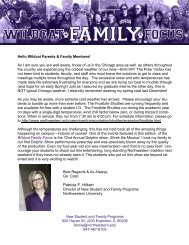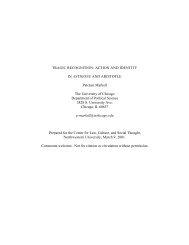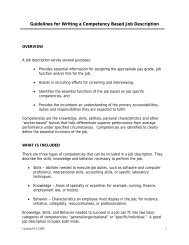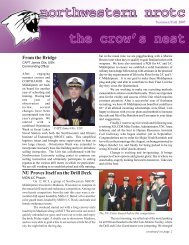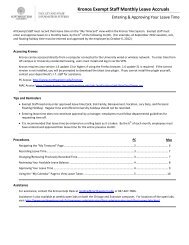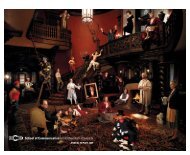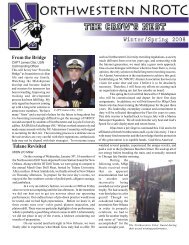Artistry Permits and Custom May Ordain - Northwestern University
Artistry Permits and Custom May Ordain - Northwestern University
Artistry Permits and Custom May Ordain - Northwestern University
Create successful ePaper yourself
Turn your PDF publications into a flip-book with our unique Google optimized e-Paper software.
156 “Descrição da situação, costumes e produtos de alguns lugares de África, ca. 1518,” DPMAC. 5:358.<br />
157 “Descrição da Viagem,” 110.<br />
36<br />
quarter of a length a cloth, others narrow woolen cloths of many colors, <strong>and</strong> of camlets<br />
[chamalotes], <strong>and</strong> other silks.” 156 Mombasa boasted a “large quantity of rich silk <strong>and</strong> gold<br />
embroidered clothes” as well as imported carpets. 157 Royal attendants at the court of the<br />
Maore sultan, much like elsewhere in the Swahili world, were “richly appareled . . . with<br />
long silk garments embroidered, after the Turkish manner.” 158<br />
Silk cloth was produced on the coast, as already seen, but the importation of the<br />
raw material necessary to produce it drove up its price. However, enough Swahili were able<br />
to afford it that the silk industry of Pate thrived until the late 1600s. Small amounts of<br />
silk were used to weave turban cloth, <strong>and</strong> imported cloth in general—if not destined for<br />
interior markets—was fashioned into locally usable garments. When Kilwa was plundered<br />
in the early sixteenth century, de Almeida’s soldiers went to great lengths to carry away<br />
“beautiful garments” as well as gold <strong>and</strong> silver. 159 Malindian ungwana wore “rich turbans<br />
of silk cloth,” 160 <strong>and</strong> many observers immediately understood the significance of headwear<br />
<strong>and</strong> the prestige-value of silk in the social stratification of Swahili society.<br />
The skull-cap, kofia, <strong>and</strong> turban were exclusive to coastal society <strong>and</strong> marked<br />
Swahili identity. The style <strong>and</strong> use of cloth in men’s headwear, however, reflected distinct<br />
social categories. De Monclaro keenly observed the stratification of Swahili society <strong>and</strong><br />
understood it, roughly like the Swahili themselves, through the idiom of men’s headwear.<br />
He recorded that three social groups in Swahili society could be discerned by their<br />
personal adornment, the first group being “those of the carapuça” or skull-cap. This<br />
classification probably denotes the non-ungwana, or those generally lacking the capital to<br />
invest in the richly worked kofia. He continued that there were “others of the barretinho,”<br />
probably referring to the kofia, the embroidered circular cap which, as described earlier,<br />
was the preserve of the ungwana. Finally, speaking of the political elite, Monclaro<br />
recognized that “others wear a toque,” or highly ornate turban. The term “mouros de<br />
touca” is commonly found in early Portuguese narratives <strong>and</strong> consistently refers to the<br />
most wealthy <strong>and</strong> politically powerful in Swahili cities—wealthy l<strong>and</strong>owners, merchants,<br />
158 “The Voyage of Captaine John Davis to the Easterne India, Pilot in a Dutch Ship; Written by himselfe [1599],”<br />
in The Voyages <strong>and</strong> Works of John Davis the Navigator. Ed. A. Markham. London, 1930. 137-8.<br />
159 A. Vespuccius, The Voyage from Lisbon to India, 1505-6, being an account of the journal by Albericus Vespuccius.<br />
Ed. C. Coote. London, 1894. 26.<br />
160 “Descrição da Situação, Costumes e Produtos de alguns lugares de África, ca. 1518,” DPMAC. 5:368.



